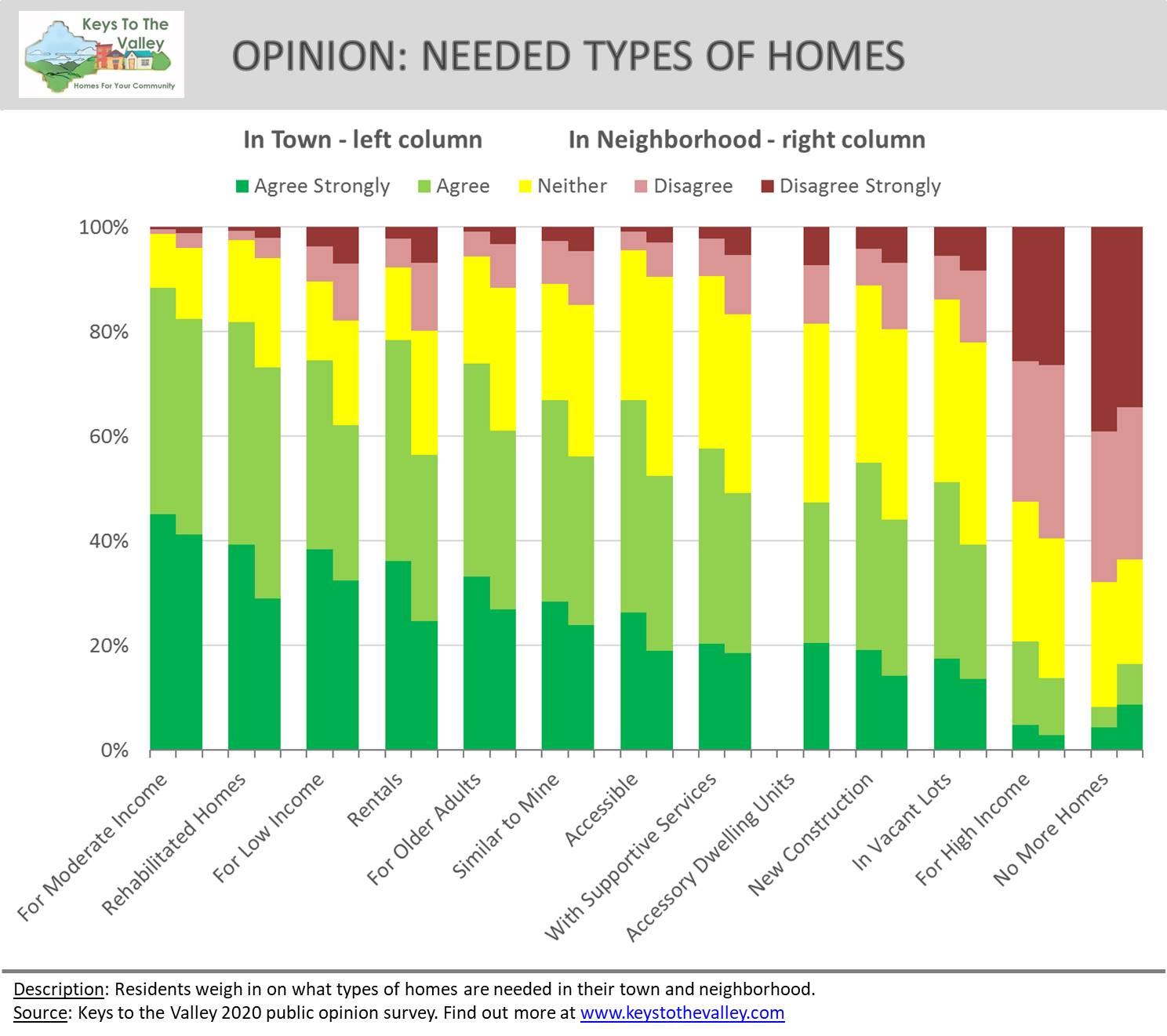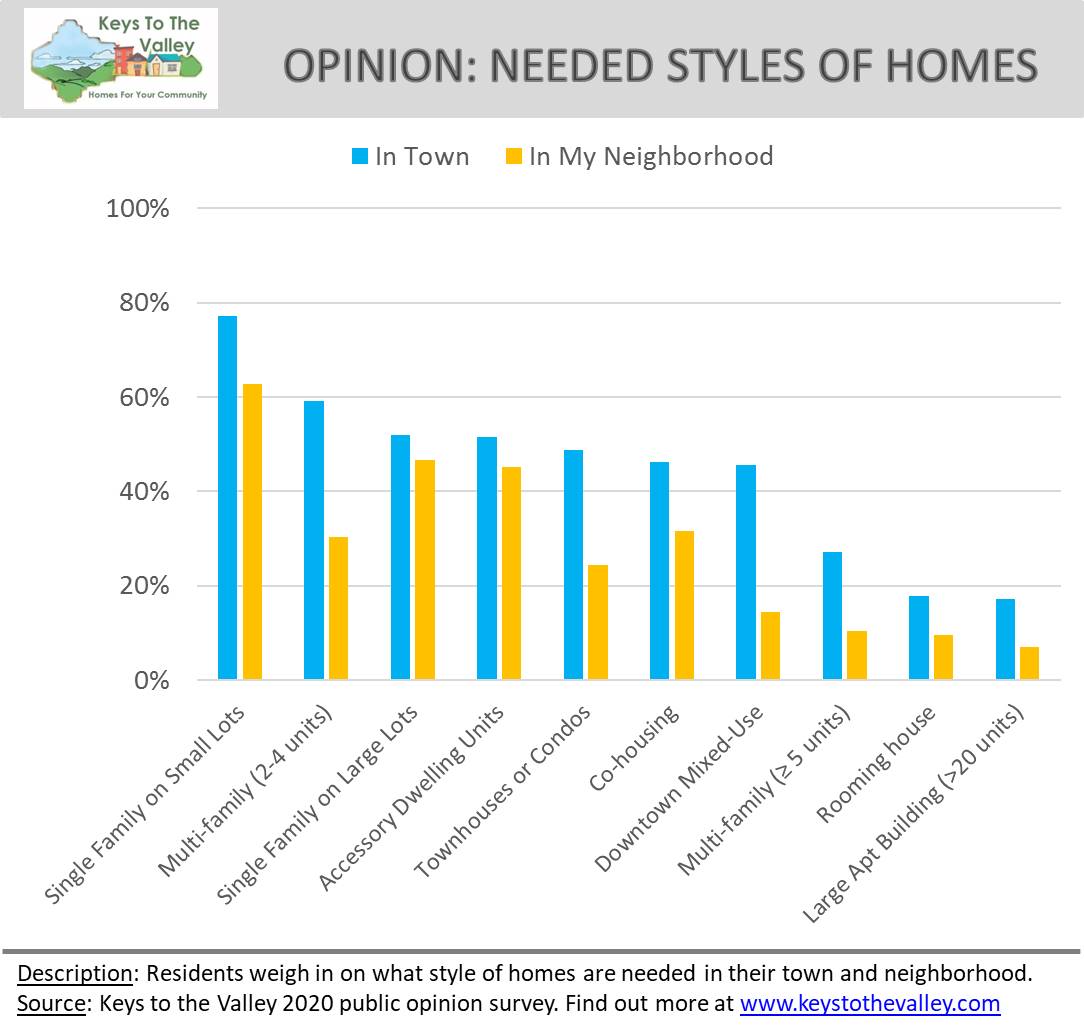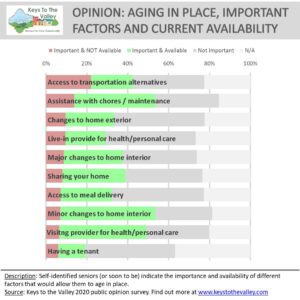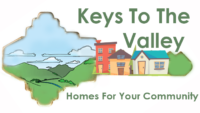Keys to the Valley conducted surveys of residents and public officials in 2020, view the survey methodology here.
A clear majority of respondents to the public opinion survey agreed that new homes are needed in our communities of various types and styles. Respondents agree or strongly agree that homes are needed in their town for moderate–income households (88%), low-income households (74%), and older adults (74%). Respondents noted a need for homes with accessible features (67%) or supportive services (57%); however, about a third do not provide an opinion on these types of homes, indicating a likely need for education on how they fit into a community (Figure 4). The survey also revealed the high value placed on our rehabilitated homes (82% agree or strongly agree) likely due to their contributions to the character of this region. On the flip side, new construction and vacant lot development found agreement from 55% and 51% respectively. These results highlight preference for building rehabilitation and the importance of community involvement during the design and permitting process of new buildings (Figure 4).

In relation to the style of a home, besides old or new, the greatest support is for the traditional single-family home on a small lot (77%). A cluster of largely “missing middle” housing types receive more moderate support (45-60%), including small multi-families, townhouses, accessory dwelling units, co-housing, and mixed-use. Those types with limited support (less than 27%) include larger unit developments and congregate living. Given the significant supply and social service challenges in the region, some of these styles will be needed in appropriate places and with significant community and institutional input.

For those who support building new homes, there is noticeable drop-in support for building new homes if they were to be located within a respondent’s own neighborhood. Rentals show the most significant difference (21% drop in agreement) between in town versus in my neighborhood. This indicates the need to show what these homes may look like and for designs to advance styles that fit into existing neighborhoods.
In your own words…
- “I don’t want any more homes in my neighborhood — I moved to a rural area for privacy.”
- “This is a tricky one. I live in a rural area near a small-town center, and we don’t want to fill up all the land that makes these areas beautiful, but we do need to find a way to address the shortage of housing.”
- “Smaller homes for smaller families”
- “Housing appropriate for seniors aging in place– one story, few or no stairs.”
Seniors comprise a significant and growing portion of the Region’s population, as the Regional Snapshot report shows. The public opinion survey found that the majority of seniors (self-identified at 55%) would prefer to remain in their current homes, while more than a quarter want to move as they age. For the most part, seniors feel their needs are met to enable them to “age in place” (e.g., access to healthcare). However, over 20% of seniors said that current transportation options are not sufficient to meet their needs, and almost 15% do not have the assistance they need for daily chores and maintenance. Seniors who are looking to move primarily want smaller, single-story homes with low levels of maintenance. Locations in downtowns or villages and accessible design are also important home qualities. Remaining in their current community was less of a priority for seniors (25%) than having a safe, low-maintenance home and access to needed services. This indicates that both a local and regional strategy is needed for accessibility upgrades, service delivery, and new home options for those willing to move out of their current living space (Figure 6). See appendix for additional details.


